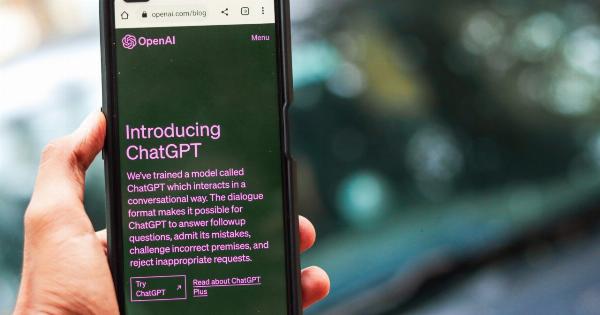Insurance has an essential role in today’s world given that it provides a safety net for losses incurred by individuals and organizations.
With the rapid expansion of technology, especially Artificial Intelligence (AI), insurers are now leveraging this technology to improve accuracy, speed, and efficiency. The incorporation of AI into insurance has made it possible for insurers to gain insight into the risk involved in diverse scenarios, utilize predictive models, and personalize products.
The following sections explore the impact of AI on various subsectors of the insurance industry.
Claims Management
One of the most critical functions of insurance companies is claims management, which deals with the process of verifying and compensating claims made by policyholders.
The task involves investigating claims, evaluating policy coverage, and approving payments. Thanks to advances in AI, insurers now can automate these processes and improve efficiency.
AI algorithms can use data sets to identify patterns and detect fraud more efficiently than humans. These algorithms can easily verify claims and decide on payouts thereby speeding up the process.
Claims can be settled faster using chatbots that provide personalized solutions to individual claims. These chatbots can analyze customer conversation histories and guide them on the right claim process.
For instance, Lemonade, an insurance company, uses AI chatbots to process claims instantly, replacing the need for claims adjusters while improving customer experiences.
Underwriting
Underwriting is the process of evaluating and accepting risks. AI has revolutionized underwriting by integrating it with advanced data analysis tools, enabling insurers to streamline the underwriting process.
AI algorithms can assess risks faster and more efficiently than human underwriters, and this results in the automation of policy issuance.
The integration of AI with underwriting has made it possible for insurers to obtain a comprehensive view of a potential policyholder’s data, such as credit scores and medical history in real-time, increasing the accuracy of risk evaluations.
For instance, AVIVA, a UK-based insurer, has integrated AI in its underwriting process, which allows its underwriters to analyze a range of data sources to improve the company’s decision-making process.
Risk Management
Risk management involves identifying, assessing, and prioritizing risks. AI can improve this process by analyzing and processing vast amounts of data and statistical models to determine risk assessments.
Moreover, AI can improve risk management by predicting future risks.
Predictive modeling uses historical data to predict future events and their likelihood and can be used in the development of insurance products such as life insurance, property, and casualty insurance. AI algorithms mine data from sources like social media sites and weather feeds and use it to identify potential events that could result in a loss.
For example, Tractable, a UK-based AI company, uses deep learning algorithms to analyze images of damaged vehicles. It determines if the vehicle can be repaired and what the repair cost will be.
Pricing
Pricing is a crucial factor in the competitiveness of insurance products. AI has made it possible to extract insights from various data sets to improve pricing models.
Insurers can analyze customer data and gain insights about customer risk preferences and customize pricing models for different populations.
Dynamic pricing models are a reality due to AI in insurance products. These models are continuously updated based on the risk and other factors, and the pricing changes accordingly.
For example, Google’s auto insurance division, known as Google Compare, was a platform that used AI algorithms to help drivers in California compare rates for auto insurance.
Customer Service
Personalization is key to excellent customer service in the insurance industry. Failure to provide personalized customer service can lead to customers turning elsewhere for their insurance needs.
AI algorithms can analyze and learn customer behavior and tailor products to these behaviors.
Chatbots powered by AI reduce wait times, improve efficiency, and personalize support for customers, thereby improving customer satisfaction levels. An example of a company that has leveraged AI for better customer service is Liberty Mutual.
Their AI-powered chatbots can handle customer inquiries and provide recommendations for relevant policies effectively and quickly.
Fraud Detection
Fraud detection is a critical task for insurance companies. A lot of money can be lost through fraudulent claims made by policyholders. AI algorithms can analyze vast data sets to detect abnormal behavior that is consistent with fraudulent behavior.
AI-powered fraud detection tools analyze data from multiple sources in real-time, allowing AI to detect fraudulent activity in seconds.
An algorithm called anomaly detection is used to identify unusual patterns of behavior and notify the insurer of a possible fraud case. For instance, Erie Insurance uses AI to detect fraudulent claims by analyzing customer data sets for any inconsistencies.
Telematics and Usage-Based Insurance (UBI)
Telematics is an insurance technology that records data about driving behavior and uses this information to determine insurance risk levels and apply pricing models.
UBI is a type of auto insurance that provides coverage based on the driver’s individual behavior rather than the vehicle insured. AI is an essential aspect of telematics, and this technology is rapidly taking over the industry.
AI uses advanced algorithms to collect driving data and identify individual driving behavior and in the case of UBI, apply the pricing model. This data includes location, time of day, speed, acceleration, and braking, among other metrics.
Companies such as Progressive, State Farm, and Allstate are amongst those that offer UBI products in the market.
Policy Automation
The automation of policies is another use case of AI in the insurance industry. AI algorithms can analyze vast amounts of data to create personalized policies and improve efficiency.
Such policies can be created instantly, reducing the amount of time spent creating policies, and this is a considerable advantage for both insurance companies and customers.
AI can analyze data from diverse sources, including social media, to determine customer behavior. The analysis is used to tailor policies specifically for the customer, providing adequate coverage and personalized pricing models.
For example, DocuSign, a technology company, has developed AI-powered software that automates and simplifies the application process, allowing for faster processing of policies.
Conclusion
The use of AI in the insurance industry has revolutionized how companies operate and deliver products. AI algorithms increase speed, accuracy, and efficiency while providing personalization to the customer experience.
Insurers that fail to adopt AI risk falling behind in an incredibly competitive market. AI is poised to create a transformational shift in the insurance industry with insurers leveraging this technology can provide products that are more affordable, relevant, and tailored to meet the needs of the customers.































